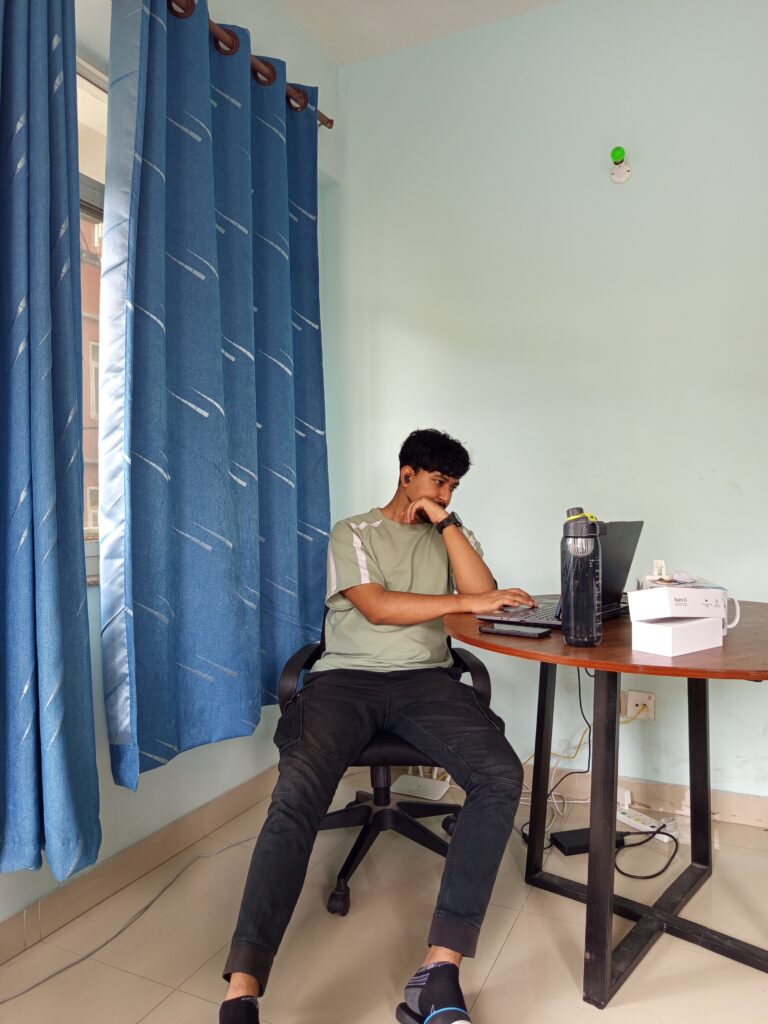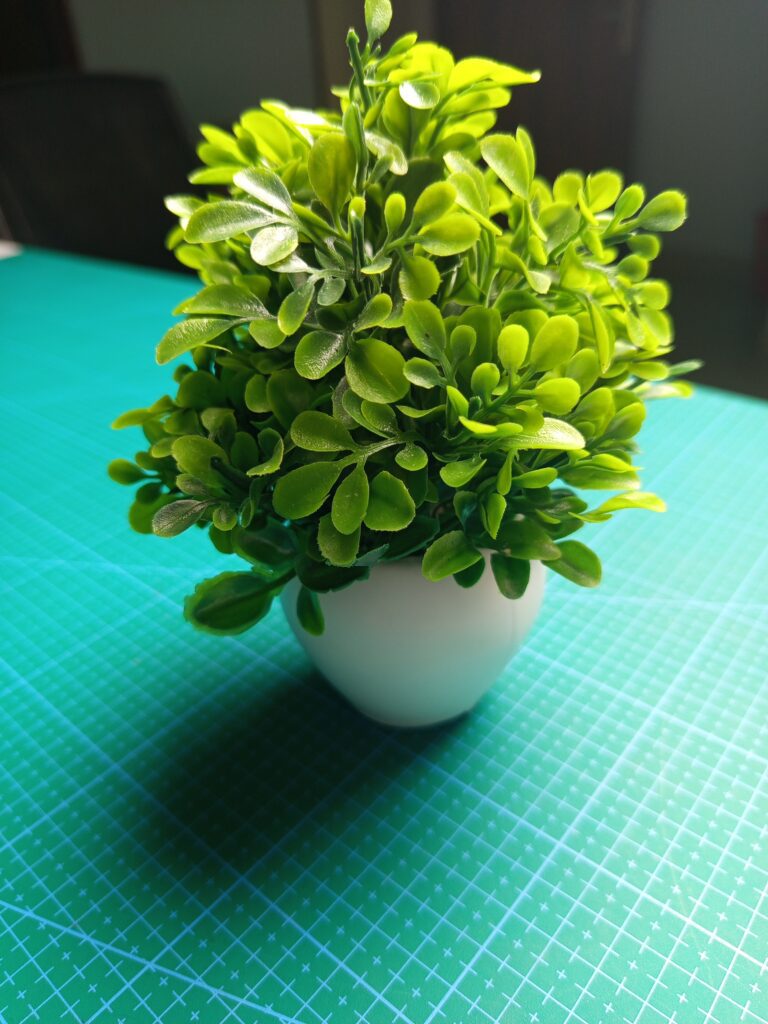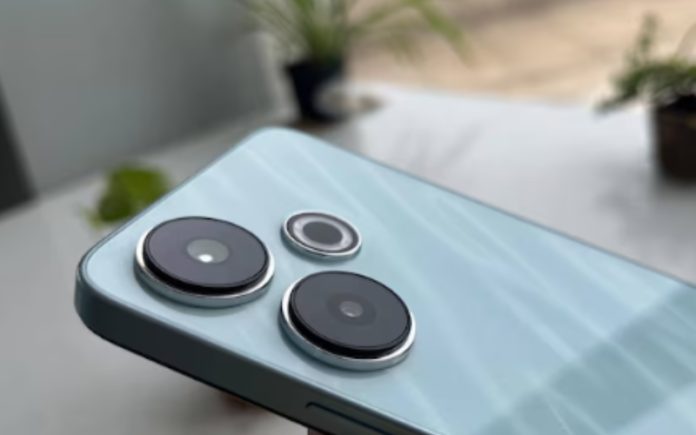Xiaomi is known for its focus on user-friendly devices that are packed with features but still affordable, especially under its Redmi brand. The new Redmi 13 continues this trend by offering advanced features to budget-conscious buyers. As the successor to the Redmi 12 5G, this model is powered by the Snapdragon 4 Gen 2 AE processor and includes a 108MP Samsung ISOCELL HM6 main camera. The phone costs NPR 18,999 for the 6/128 GB variant and NPR 21,999 for the 8/256 GB variant in Nepal
Let’s explore the specifications and see how they perform in real-life use, highlighting both the strengths and possible drawbacks of this budget-friendly 5G phone.
Table of Contents
Redmi 13 Full Review: Pros & Cons, Benchmarks and Rating
Design and Display
The Redmi 13 5G, despite being marketed as a budget smartphone, exudes a premium feel, particularly when you hold the phone for the first time. I have the Hawaiian Blue version, featuring wave-like patterns on the rear panel that shimmer beautifully under light, making the phone eye-catching.
Though slightly wide, the flat edges can feel uncomfortable if you grip your phone tightly. The metallic blue frame complements the overall aesthetic seamlessly. While the rear panel effectively hides fingerprints and smudges, its glossy finish can slip the phone, so using a case is advisable.

The Redmi 13 5G features a distinctive camera setup on its rear panel, two individual camera rings, and a flash unit, eschewing the traditional separate camera module design. A 3.5mm headphone jack and a speaker are positioned at the top of the device, while the bottom edge houses the USB Type-C port, mono speaker, and microphone. The phone’s chassis boasts an IP53 rating, protecting against water splashes and dust.
At the front, the device has a sizable 6.79-inch LCD screen that offers a Full HD+ resolution of 2400 x 1080 pixels. This display supports a peak brightness of 550 nits and has been upgraded to a smooth 120Hz refresh rate. The screen is surrounded by thin bezels, with a slightly thicker bottom chin, which is typical for smartphones in this price range. The display delivers excellent viewing angles and provides a satisfactory multimedia experience.

The brightness level is adequate indoors, but it struggles to maintain visibility in bright outdoor conditions. The phone supports L1 Widevine certification, enabling HD streaming on various OTT platforms. Additionally, it includes a wet touch feature, which generally functions well despite occasional mistouches. The display is protected by Corning Gorilla Glass 3, offering durability against scratches and minor damages.
Camera
The Redmi 13 5G stands out for its impressive camera system, especially given its budget-friendly price. The primary rear camera features a 108MP Samsung ISOCELL HM6 sensor, a significant upgrade from the 50MP lens in its predecessor. This large 1/1.67” sensor, along with 9-in-1 pixel binning technology, aims to deliver excellent low-light performance and high-detail images across various lighting conditions.






A key feature is the 3x in-sensor zoom, which offers the ability to capture closer shots without relying purely on digital zoom, enhancing framing flexibility and distant subject capture. The f/1.75 aperture is adequately wide to allow more light, improving performance in low-light scenarios.


The device also includes a 2MP macro camera for close-up photography. Although typical of budget phones, its lower resolution may limit its use to casual close-ups.On the software side, the Redmi 13 5G includes features like Night mode, AI Auto night mode, HDR, and various filters, enhancing photo quality in difficult conditions and adding creative options for users.
For selfies, the phone has a 13MP front camera with an f/2.45 aperture, producing satisfactory images suitable for social media and video calls.


Performance
The Redmi 13 5G is powered by the Qualcomm Snapdragon 4 Gen 2 Accelerated SoC, which ensures smooth performance. This chipset combines up to 8GB of LPDDR4x RAM and 128GB of UFS 2.2 storage. You can expand the storage to 1TB using a Micro SD card. We reviewed the highest variant with 8GB RAM to see how it performs in everyday use.

In the Geekbench 6 benchmark test, the Redmi 13 5G scored well. The AnTuTu benchmark results were similar, with the Redmi 13 5G and Realme Narzo N65 achieving comparable scores.

We also used the Burnout Benchmark app to test the phone’s performance under stress. In this scenario, the Redmi 13 5G lagged behind its competitors. For gaming, the Redmi 13 5G held its own against its rivals, delivering similar frames per second (FPS) numbers. It ran Call of Duty: Mobile at an average of 50FPS on ‘Very High’ graphics and ‘High’ frame rate settings. In Real Racing 3, it averaged 57FPS, and in BGMI, it averaged 28FPS on ‘HD’ graphics and ‘High’ frame rate settings. Lowering the graphics to ‘Smooth’ improved the gameplay experience in BGMI.
Regarding thermals, the device did heat up noticeably, with temperatures rising more than those of its competitors. During 30-minute gaming sessions for each of the three games tested, the device’s temperature increased by an average of 10.3 degrees Celsius.
OS and UI
The Redmi 13 is Xiaomi’s first device to come with the new HyperOS, based on Android 14, straight out of the box. Although the phone comes with several pre-installed third-party apps, you can easily uninstall them if you prefer. The user interface is optimized for the 120Hz refresh rate, ensuring a smooth and hassle-free experience.
The phone includes a suite of smart features such as Floating Windows, virtual memory extension, second space, and one-handed mode. Additionally, it offers Flash notifications for phone calls and alarms, which I find particularly useful. Xiaomi guarantees 2 years of major OS upgrades and 4 years of software updates, surpassing other competitors in this price range.
Battery and Charging
The Redmi 13 5G is equipped with a larger 5,030mAh battery and upgraded 33W fast charging support, an improvement over the Redmi 12 5G. In the PCMark benchmark test, the phone achieved a commendable 14 hours of battery life. During our lab tests, which included gaming and video streaming, the phone experienced a total battery drain of 31 percent over 2 hours of intensive use. For regular users, this translates to a full day of battery life with ease.

The device comes with a 33W charging brick in the retail box, and it takes approximately 1 hour and 26 minutes to recharge from 20 percent to full capacity. This charging speed is impressive for its price range, although it falls short compared to the significantly faster recharging time of the iQOO Z9x.
Pros and Cons
| Pros | Cons |
| Smooth 120Hz FHD+ display | No stereo speakers |
| Good daylight cameras | Lots of third-party apps |
| Impressive performance | Brightness could be better |
| Decent battery life |
Verdict
The Redmi 13 5G is a standout in the budget smartphone market, offering a compelling mix of features at an attractive price. The device boasts an elegant design that is both modern and appealing. It runs on the latest Android OS, ensuring users have access to the newest features and security updates. One of its most impressive attributes is the 108MP main camera sensor, which promises high-resolution photos with great detail and clarity. Additionally, the phone is powered by a capable processor that delivers smooth performance for everyday tasks and multitasking.
However, there are some trade-offs. The device features a large LCD panel that provides a smooth visual experience. Still, it may not offer the same level of contrast and color vibrancy as the OLED displays found in some higher-end competitors. This difference might be noticeable to users who prioritize display quality for media consumption.
Despite this, the Redmi 13 5G delivers substantial value for its price point. Xiaomi continues its tradition of offering feature-packed phones that are accessible to a wide range of consumers.







